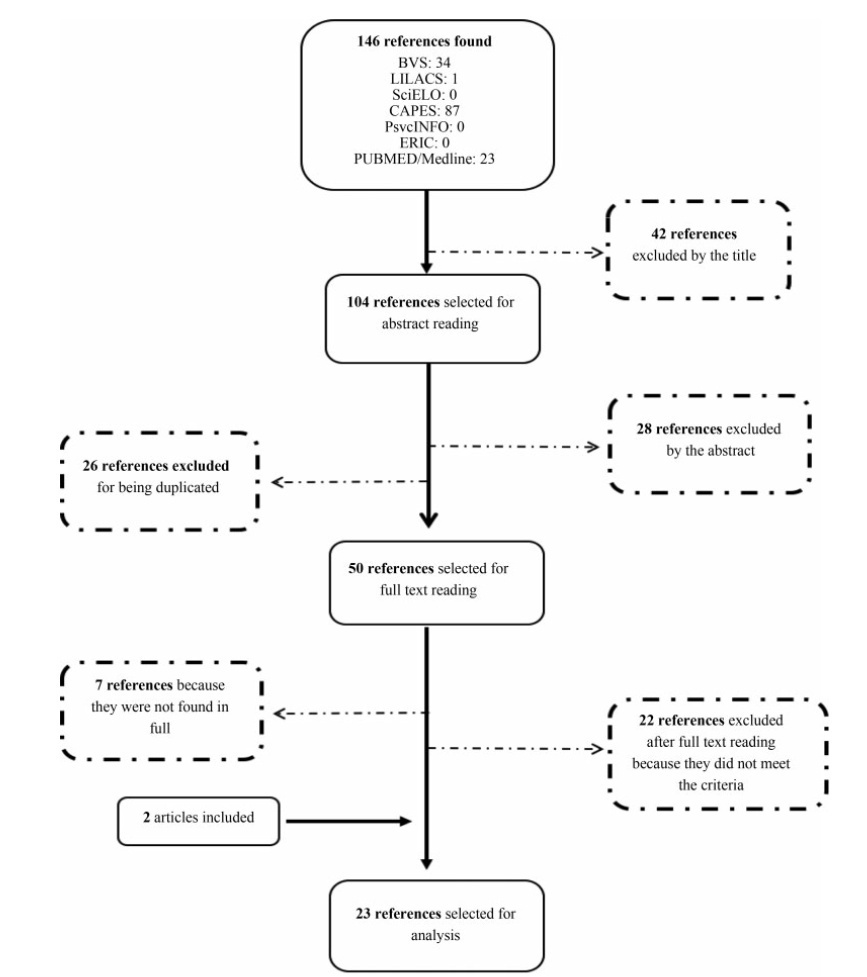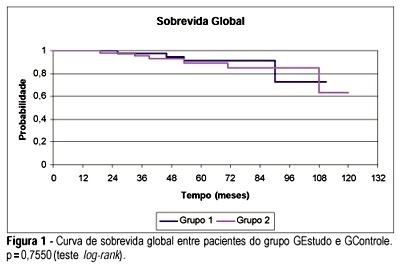Summary
Revista Brasileira de Ginecologia e Obstetrícia. 2006;28(7):403-409
DOI 10.1590/S0100-72032006000700005
PURPOSE: to compare in a retrospective way, 51 women who underwent tubal ligation, 30 through microlaparoascopy (Gmicrol) and 21 through minilaparotomy (Gminil). METHODS: the analyzed parameters were: total time for accomplishment of the procedure and the surgical technique, time of hospital stay and return to the habitual activities after the surgery, postoperative pain, morbidity, satisfaction degree and esthetic effect, considering values of p<0,05 as significant, and also standard cost. RESULTS: Gmicrol took less time to accomplish the surgery than the Gminil (43 against 57 minutes respectively, p<0,05), less time to accomplish the surgical technique (6.48 against 30.32 minutes respectively, p<0,05), and lower hospital stay (9,90 hours as against 41,7 hours respectively, p <0,05). There was no significant difference between the two groups regarding time to return to the habitual activities after surgery. To evaluate postoperative pain, a scale of 0-10 it was applied. Gmicrol present a lower pain score on the 1st and 2nd postoperative days (1.13 and 0.26 to Gmicrol and 4.52 and 1.14 to Gminil, respectively, p<0,05). There was no significant difference between immediate postoperative the most common complaint being pain at the site of pain and that on the 3rd postoperative day. Gminil presented a higher morbidity rate incision. To evaluate the satisfaction degree and esthetic effect, numeric values were attributed to as good, regular, poor and very bad as answered by the patiets. Gmicrol presented a higher satisfaction degree (p<0,05) and better esthetic effect as compared to Gminil (p <0,05). The microlaparoscopy standard cost was R$ 109.30 being lower than that of minilaparotomy. CONCLUSIONS: tubal ligation by microlaparoscopy, under local anesthesia and conscious sedation presented some advantages compared to minilaparotomy.
Summary
Revista Brasileira de Ginecologia e Obstetrícia. 2017;39(8):403-407
To determine the clinical and epidemiological characteristics of abdominal wall endometriosis (AWE), as well as the rate and recurrence factors for the disease.
A retrospective study of 52 women with AWE was performed at Universidade Estadual de Campinas from 2004 to 2014. Of the 231 surgeries performed for the diagnosis of endometriosis, 52 women were found to have abdominal wall endometriosis (AWE). The frequencies, means and standard deviations of the clinical characteristics of these women were calculated, as well as the recurrence rate of AWE. To determine the risk factors for disease recurrence, Fisher’s exact test was used.
The mean age of the patients was 30.71 ± 5.91 years. The main clinical manifestations were pain (98%) and sensation of a mass (36.5%).We observed that 94% of these women had undergone at least 1 cesarean section, and 73% had used medication for the postoperative control of endometriosis. The lesion was most commonly located in the cesarean section scar (65%). The recurrence rate of the disease was of 26.9%. All 14 women who had relapsed had surgical margins compromised in the previous surgery. There was no correlation between recurrent AWE and a previous cesarean section (p = 0.18), previous laparotomy (p = 0.11), previous laparoscopy (p = 0.12) and postoperative hormone therapy (p = 0.51).
Women with previous cesarean sections with local pain or lumps should be investigated for AWE. The recurrence of AWE is high, especially when the first surgery is not appropriate and leaves compromised surgical margins.
Summary
Revista Brasileira de Ginecologia e Obstetrícia. 2001;23(6):403-403
Summary
Revista Brasileira de Ginecologia e Obstetrícia. 2001;23(6):403-403
DOI 10.1590/S0100-72032001000600010
Summary
Revista Brasileira de Ginecologia e Obstetrícia. 2021;43(5):403-413
To investigate in the literature the studies on the benefits ofmusic therapy interventions among pregnant women in the prenatal, delivery and postpartum periods.
The search for articles was carried out in the following electronic databases: VHL, LILACS, SciELO, Portal CAPES, PsycINFO, ERIC, PubMed/Medline, and journals specialized in this field: Revista Brasileira de Musicoterapia (“Brazilian Journal of Music Therapy”) and Voices.
Descriptors in Portuguese (musicoterapia, gravidez, gestantes, revisão), English (music therapy, pregnancy, pregnant women, review) and Spanish (musicoterapia, embarazo, mujeres embarazadas, revisión) were used. The search was delimited between January 2009 and June 2019. The process of selection and evaluation of the articles was performed through peer review.
n The following data were extracted: article title, year of publication, journal, author(s), database, country and date of collection, purpose of the study, sample size, type of care, intervention, instruments used, results, and conclusion. The data were organized in chronological order based on the year of publication of thestudy.
In total, 146 articles were identified, and only 23 studies were included in this systematic review. The articles found indicate among their results relaxation, decreased levels of anxiety, psychosocial stress and depression, decreased pain, increase in the maternal bond, improvement in the quality of sleep, control of the fetal heart rate and maternal blood pressure, and decreased intake of drugs in the postoperative period.
Music therapy during the prenatal, delivery and postpartum periods can provide benefits to pregnant women and newborns, thus justifying its importance in this field.

Summary
Revista Brasileira de Ginecologia e Obstetrícia. 2003;25(6):403-409
DOI 10.1590/S0100-72032003000600004
PURPOSE: to evaluate the local, regional and distant recurrence rate of a new surgical technique for the conservative treatment of the breast cancer in early stages. The technique is based on breast segmental resection with axillary dissection and skin sparing by a single periareolar incision. METHODS: one hundred and nineteen patients with breast cancer stages I and II constituted the present study. The study group comprised fifty-seven patients who were submitted to surgery by the proposed technique, while 62 patients submitted to the classic quadrantectomy constituted the control group. Postoperative radiotherapy and boost were perfomed in both groups. The average follow-up was 50.1 months for the study group and 51.2 months for the control group. The rates of recurrence, global survival and disease-free survival were analyzed and compared between the two groups. RESULTS: the rate of local recurrence in the period was 3.5% for the study group and 4.8% for the control group. There was no statistically significant difference between the groups as to disease-free survival and global survival rates. CONCLUSION: we demonstrated that the technique of segmental resection with axillary dissection by a single periareolar incision, preserving skin, did not show difference in relation to the classic quadrantectomy, regarding rates of recurrence, global survival and disease-free survival.

Summary
Revista Brasileira de Ginecologia e Obstetrícia. 2020;42(7):404-410
To analyze the applicability and efficiency of amulti-approach laparoscopic training in improving basic laparoscopic skills of obstetrics and gynecology (OBGYN) residents.
Cross-sectional, observational and descriptive study, developed at the Experimentation and Surgery Training Center (CETEC, in the Portuguese acronym) of the Hospital Israelita Albert Einstein with OBGYN residents. Theoretical and practical tests were applied to 24 OBGYN residents to assess their laparoscopic skills before and after their participation in an 8-week course. The course involved theoretical lectures and practical laparoscopic surgery exercises developed using rubber models, black boxes, virtual simulators and animal models (pigs).
There was an overall improvement in the ability of the residents, with an increase in the number of correct answers in the theoretical evaluation and decrease in the time needed to perform practical tests (needle holder assembly and laparoscopic node). The course was evaluated by the students as highly relevant for both improving their surgical skills and motivating them to continue practicing.
Laparoscopic training using multiple approaches resulted in significant improvement of surgical skills with a high satisfaction level of the participants. Further studies are still needed to measure the long-term retention of these acquired skills.
